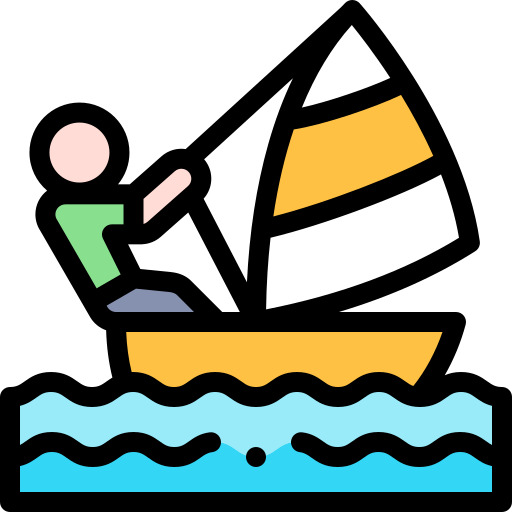A Complete Guide to Marine Safety Equipment
Marine safety equipment is critical for ensuring the safety of individuals on boats, ships, and other watercraft. Whether navigating calm waters or rough seas, having the right safety gear can mean the difference between life and death. This guide outlines various types of marine safety equipment, their purposes, and important considerations for their use.
Life Jackets and Personal Floatation Devices (PFDs)
Life jackets and PFDs are essential items for anyone venturing into the water, as they provide buoyancy and keep individuals afloat in emergency situations. In many countries, regulations require that all passengers on board must have a properly fitting life jacket or PFD.
When selecting life jackets, consider the following:
- Types: There are several types of life jackets designed for specific activities (e.g., Type I for offshore, Type III for various recreational activities).
- Fit and size: Ensure the life jacket fits snugly and is appropriate for the user’s weight and size.
- Inspection: Regularly inspect life jackets for any signs of wear and tear.
Flares and Distress Signals
Flares serve as visual signals in emergency situations, indicating distress to nearby vessels or aircraft. There are three main types of flares:
- Handheld flares: Used to signal distress, typically burnt for around one minute during daytime or nighttime.
- Parachute flares: Fired into the air, these flares can be seen from a distance and burn for approximately 40 seconds.
- Smoke signals: Used during the daytime, smoke signals create a colored smoke plume visible from afar.
Regulations dictate that vessels must carry a specific number of flares based on their type and size, and they should be checked regularly for expiration dates.
Fire Extinguishers
Fires on board can escalate quickly, making fire extinguishers a critical safety item. It is crucial to have extinguishers that are suitable for marine use and comply with local regulations.
When choosing fire extinguishers, keep the following in mind:
- Types: Familiarize oneself with the various classes (A, B, C) of fire extinguishers and select an appropriate type for marine environments.
- Location: Ensure that extinguishers are easily accessible and not obstructed by other equipment or gear.
- Inspection: Regular checks should be conducted to ensure extinguishers are fully charged and functional.
First Aid Kits
A well-stocked first aid kit is indispensable for addressing injuries and illnesses that may occur on the water. It is important to customize your first aid kit based on the specific activities you engage in and the number of people on board.
Key items to include in a marine first aid kit are:
- Adhesive bandages of various sizes
- Antiseptic wipes and ointments
- Burn dressings
- Hydrocortisone cream
- Gauze pads and adhesive tape
- Scissors and tweezers
- Thermometer
Regularly review and replenish your first aid kit to ensure that supplies are always available and not expired.
VHF Radio and Communication Devices
Maintaining communication while at sea is vital, especially in an emergency. A VHF radio facilitates communication with other boats and coastal stations and can be lifesaving when distress calls are necessary.
Considerations when choosing a VHF radio include:
- Fixed versus handheld units: Fixed units generally have better range, while handheld units offer portability.
- DSC capability: Digital Selective Calling (DSC) allows direct distress alerts to coast guards and other vessels.
- Battery life: Ensure that handheld models have sufficient battery life to last through extended trips.
Emergency Position-Indicating Radio Beacon (EPIRB)
An EPIRB is a device that, when activated, sends a distress signal to rescue authorities. This signal includes the vessel’s location, significantly speeding up search and rescue efforts.
Key features to look for in an EPIRB include:
- 406 MHz frequency: This is the standard frequency used for emergency distress signals.
- Automatic activation: Choose a model that automatically activates when it hits the water.
- GPS capability: Many modern EPIRBs include built-in GPS for pinpoint positioning.
Emergency Equipment Checklist
To ensure that your vessel is adequately equipped for emergencies, it’s beneficial to regularly review an equipment checklist. Below is a concise outline of suggested items for marine safety:
| Safety Equipment | Quantity |
|---|---|
| Life Jackets/PFDs | One for each passenger |
| Flares | Three (with appropriate types) |
| Fire Extinguishers | At least one, depending on vessel size |
| First Aid Kit | One, fully stocked |
| VHF Radio | One |
| EPIRB | One |
| Sound Signaling Device | One |
Conclusion
The importance of marine safety equipment cannot be understated. It not only protects individuals on the water but also ensures compliance with legal regulations that vary by location and type of vessel. Regular maintenance, checks, and updates of safety equipment are vital to ensure proper functionality in emergencies. Proper knowledge and preparation go hand in hand in enhancing safety while navigating waterways, ultimately leading to a safer marine experience.
